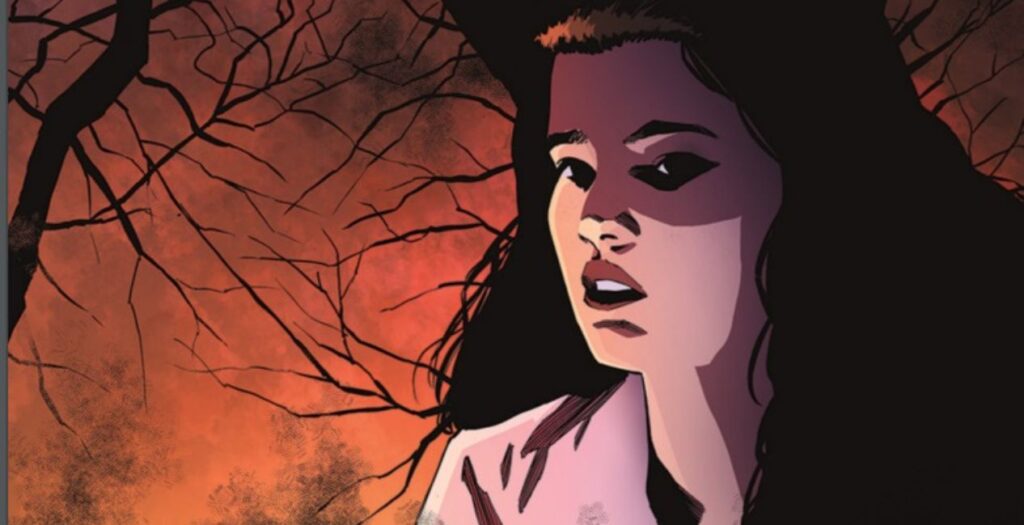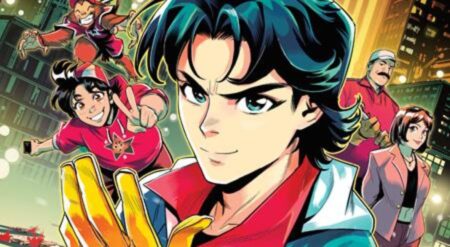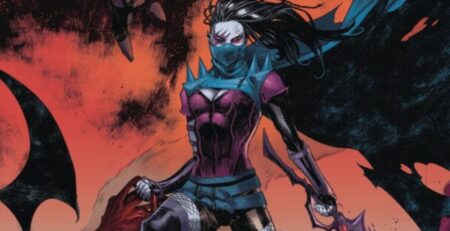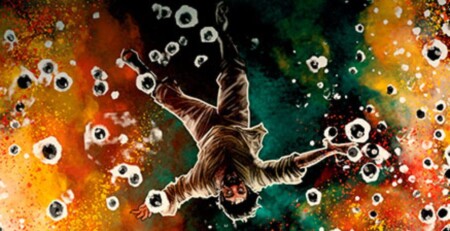Who Killed Sarah Shaw is a Kickstarter graphic novel—created by Adam Markiewicz and Frankie White.
As a documentary film crew investigates the forty-year-old murder of the very popular Sarah Shaw, the whole town and its residents have its secrets aired out in the open.
Who Killed Sarah Shaw has a plot that is beautifully set up. It follows a low-budget, two-piece film crew shooting the last of a true-crime series. When they venture into Hardground, Michigan, they investigate the death of Sarah Shaw. Beloved by all, the murder has plagued and swallowed the town in shame and secret. Each chapter interviews a different figure, someone who knew Sarah.
The interview subjects had their secrets leading up to that night, afraid to tear them back open and reveal crimes and regrets. And as the crew scratches deeper, the town starts to resist. The pacing is slow, letting revelations dig in and casting suspicions everywhere. The perfect life that Sarah Shaw lived is anything but.
The quaint little town, comprised of Midwestern American values, has hidden many crimes until a young couple scratches beneath the surface. Many parts of Who Killed Sarah Shaw are creepy and downright unpleasant, which is precisely why the town doesn’t discuss them. However, the trauma is still painful, connecting all the secrets into one grand plot.
Not all of those avenues are concluded, leaving many wounds open. The ending is not as conclusive as some may like, straying away from definitive statements, but that fits the drama-loving filmmakers. The plot is about how the story is told, not just what happens within it.
The characters in Who Killed Sarah Shaw are fascinating. At the heart of it are the documentary filmmakers. Jes leads the duo, the face in front of the camera, leading her boyfriend and cameraman Dave into trouble. Much of the conflict centers around who they want to be. Dave is there just to tell the story, while Jes is determined to find the killer. Not necessarily for the right reasons, but sometimes that’s unnecessary. Selfishness is a factor in this book. Everyone is out for themselves, trying to protect or expose what they have hidden away for personal gain.
Most characters in Who Killed Sarah Shaw are not good people, especially at the start of the comic—even the protagonists. Jes is severely unlikable for most of the comic, but her tenacity draws revelations from people. Due to their suffering, the town has become hardened and abrasive. There’s abuse, scandal, and pain digging its barbs into their memories.
The other central character in Who Killed Sarah Shaw is Sarah Shaw herself. For most of the issue, Sarah can’t speak because she’s seen in flashbacks. The dialogue in those scenes is told through narration. So when Sarah says something, it replays from those she was with. So, the readers never get an accurate idea of her voice until the book’s final part. Markiewicz and White excel at providing the dead woman with a complete personality. Sarah is initially a popular, sporty schoolgirl but ends up as so much more. Sarah’s happy life is anything but ruined by the men in her life.
Each interviewee brings a whole new attribute to Sarah, which perhaps tarnishes that perfection. Sarah’s monologue late in the book is gorgeously written. It captures the frustration of living in a small town, especially when your life is falling apart. The dialogue generally has this powerful, profound naturalism that makes every word stick.
The art is stunning, and the passage of time is excellently displayed in Who Killed Sarah Shaw. All the interview subjects are now older and look it. The weight of the guilt and grief has affected them, aging them all enormously. Then, in the flashbacks, you see them in younger guises. The characters look realistic and natural, just like their dialogue.
Much of the attention around Sarah focused on her looks, but the art visually explores other parts of her life. Not just on a domestic level, the book sometimes refers to her as the “Briar Witch.” It never strays entirely into a supernatural area, but a folk horror element creeps in. Around the cabin where she died, the book gets scary.
The creators are brazen and honest with what they show, leaving little to the imagination. White has always been open about sex and nudity in his work, and this is another example.
The town itself is beautifully illustrated in Who Killed Sarah Shaw. So many small details make it look lived in while also carrying remnants of the past. It’s the kind of town that hasn’t changed much since Sarah’s murder, trapped in a time bubble that is suffocating it. Despite the book’s melancholy feel, the creators have some fun. There is even an X-Men reference hidden within the panels.
Who Killed Sarah Shaw is black-and-white, but the art style can compensate. The dotted style moves between black and white, creating a difference between jet black and stark white. It crafts shadows and shapes and generates a sense of depth and dimension. This is a comic where what happens in the background and the foreground can be pivotal, and the dotted style is perfect. The lettering is clear and easy to read.
Who Killed Sarah Shaw taps into the scars that stain small towns across America and possibly other countries worldwide. It shows how a collective pain and desire to hide from the truth can prevent justice from ever prevailing. Once the secrets come out, they can be dirty, devastating, and grubby. But then the real personality of a young girl gets stuck, too. Every character adds something crucial to the story, with their pain and anguish proving a layer or answer to a burning question. It gives the tale grit because each figure has so many dimensions.
Voices are rarely raised, and there’s little violence. But this quiet sadness tinged with remorse and mystery packs more of a punch. It’s a comic for adults, and only adults may be able to understand its darkest depths. Markiewicz and White are blunt and bold. Nudity and sex are there to be stark, not sexy. By the end, the whole town is left looking guilty and soiled.
Who Killed Sarah Shaw’s Kickstarter campaign begins on January 20th.
Who Killed Sarah Shaw
TL;DR
Who Killed Sarah Shaw taps into the scars that stain small towns across America and possibly other countries worldwide. It shows how a collective pain and desire to hide from the truth can prevent justice from ever prevailing.








